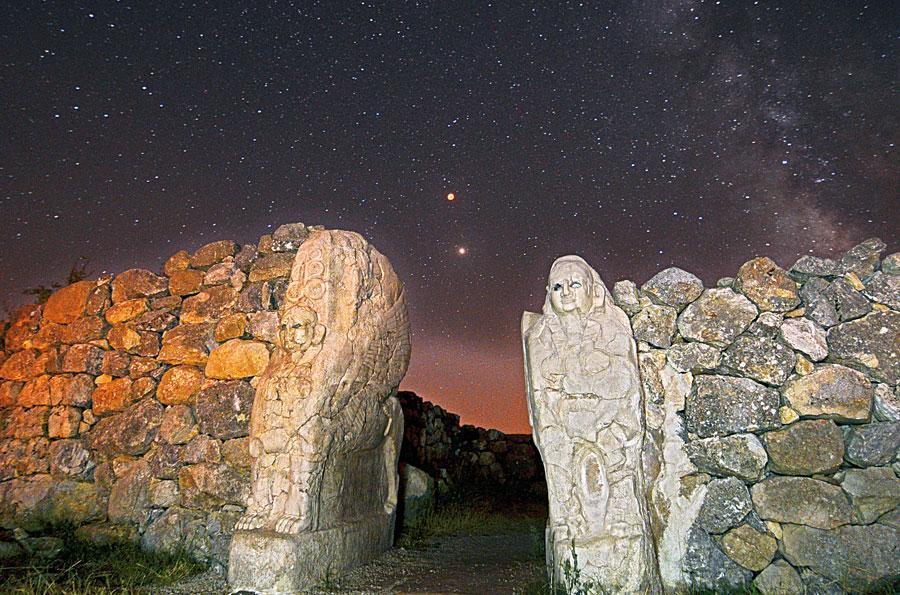
One of the first civilizations in Anatolia is located in Turkey’s Black Sea province of Çorum.
Hattusha, the capital of the Hittite Empire, dates back to the second millennium B.C. and has been listed as a UNESCO World Heritage site since Nov. 28, 1986.
The period marks the transition from the Middle to the late Bronze Age. This is when the alphabet developed and the world saw the rise of the Hittite Empire.
The ancient city, declared a “natural history park,” is enclosed by a six-kilometer wall.

So far, 31 temples have been unearthed along with numerous tunnels and gateways, which point to underground cities.
Its Lion’s Gate, Royal Gate and the Yazılıkaya rupestral ensemble art provide a unique insight into the era.
The Hittites enjoyed considerable influence on civilizations in Anatolia and northern Syria through its palace, temples and trade centers in Hattusha.
Hattusha is where the Kadesh Peace Treaty, the first in the world, was signed between the Hittites and Egyptians in 1280 B.C.
Archaeological excavations are still ongoing in the ancient city.
Speaking to Anadolu Agency, Ömer Arslan, head of the provincial directorate of culture and tourism, said they expect at least 350,000 tourists to visit Hattusha this year.
Arslan said Çorum was home to a rich cultural treasure with its archaeological fields and historical artifacts.
“We have nearly 34,000 artifacts at the museums in Çorum. Nearly 6,000 of them have been displayed, the remaining are being protected in the inventory. They are also exhibited from time to time,” he said.
Most artifacts from Çorum are displayed in the capital Ankara’s very first museum, the Museum of Anatolian Civilizations, Arslan said.
He said they were developing new projects to bring Çorum’s historical artifacts in tourism and 200,000 tourists visited the city in 2012 thanks to these projects.
Arslan said after that, the tourism sector suffered a loss in the country. “We have data that tourism rears up again. Now, we believe we will welcome 350,000 visitors to the ancient sites,” he added.
We will actualize 30 projects with a budget of 285 million Turkish Liras ($56 million) in four years in order to increase Çorum’s tourism potential, Arlsan said.
He said they used the Central Black Sea Development Agency (OKA) and the European Union grants for some of the projects.
“We have 30 big projects to be finished in four years. Among them are the historic Koyunbaba Bridge, visitor welcome centers, Hittite Dam, and the restoration of some mansions and artifacts. Our tourism infrastructure will be finished at the end of four years. On the other hand, we carry out promotional works. We have renewed tourism signboards on the Samsun-Ankara highway. People will be able to know about Çorum’s historical values when they travel to the Central Anatolian region from the Black Sea,” said Arslan.